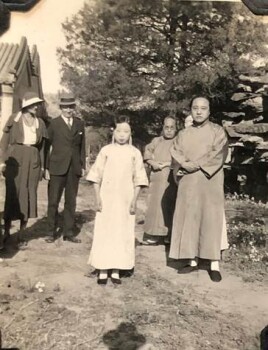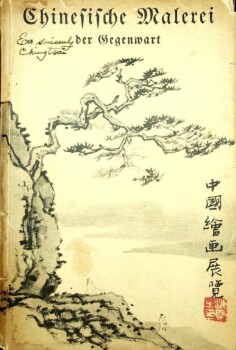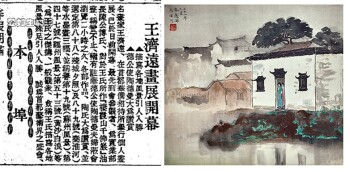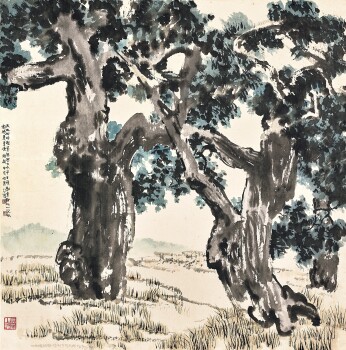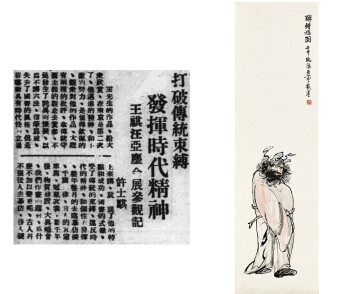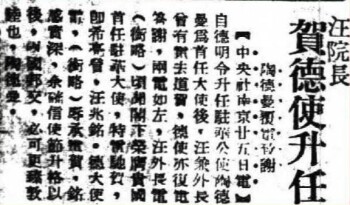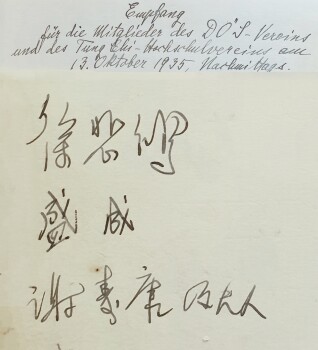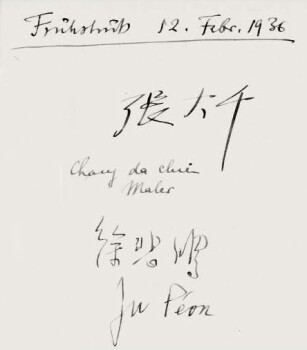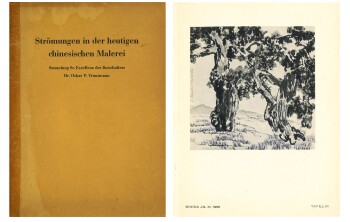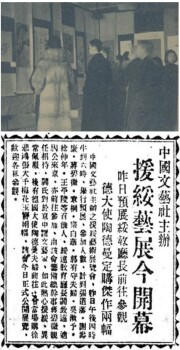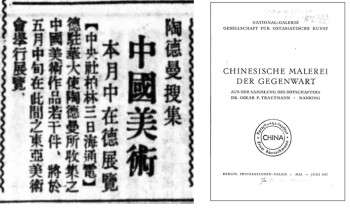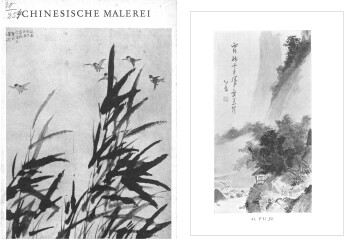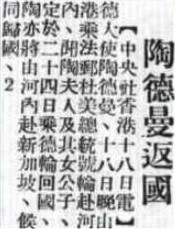A t the height of tensions during the outbreak to the Second Sino-Japanese War, German Ambassador to China Oskar Trautmann attempted to broker peace between the two combatant nations in 1937–38. The ultimate collapse of negotiations presents one of the great what-ifs of history. A distinguished government official, Trautmann spent his long career upholding positive relations between Germany and China. Along the way, he became enamored by the wonders of contemporary Chinese paintings and meticulously amassed an art collection, leading him to befriend artists and champion their works in a heartening display of cultural exchange and appreciation back home in Europe.
- 1931
- 1933
- 1931–1935
- 1934
- 1934
- 1934
- 1935
- 1935
- 1935
- 1936
- 1936
- 1936
- 1937
- 1937
- 1937
- 1937
- 1938
- 1938
-
Shen, CharlieOctoberOskar Trautmann was delegated to Beijing to take up the post of German minister to China.
-
 1933Trautmann served as chairman of the newly established Sino-German Cultural Association.
1933Trautmann served as chairman of the newly established Sino-German Cultural Association.
April
Trautmann and his wife visited Pu Ru at the artist's residence in Beijing. -
 1931–1935Qi Baishi dedicated Amaranth to Trautmann
1931–1935Qi Baishi dedicated Amaranth to Trautmann -
 1934Trautmann was an active promoter of the Chinese Paintings Exhibition held in Berlin, where more than 270 paintings were displayed.
1934Trautmann was an active promoter of the Chinese Paintings Exhibition held in Berlin, where more than 270 paintings were displayed. -
 Shen, CharlieAprilTrautmann purchased Wang Jiyuan's Ladies by the Qinhuai River from Wang's exhibition in Nanjing
Shen, CharlieAprilTrautmann purchased Wang Jiyuan's Ladies by the Qinhuai River from Wang's exhibition in Nanjing -
 WinterNovember
WinterNovember
A memorial service and posthumous exhibition were held for the late Gao Qifeng. Wang Jinwei and Trautmann were a part of the organising committee.
Winter
Xu Beihong dedicated Ancient Cedar Trees to Trautmann. -
 Shen, CharlieAprilTrautmann purchased Wang Yachen's Drunken Zhongkui from Wang's exhibition in Nanjing.
Shen, CharlieAprilTrautmann purchased Wang Yachen's Drunken Zhongkui from Wang's exhibition in Nanjing. -
 Ip, CarmenMayThe German consulate was promoted to an embassy and Trautmann was appointed the first German ambassador to China.
Ip, CarmenMayThe German consulate was promoted to an embassy and Trautmann was appointed the first German ambassador to China. -
 OctoberThe German embassy has held a Sino-German cultural event attended by both Xu Beihong and Trautmann.
OctoberThe German embassy has held a Sino-German cultural event attended by both Xu Beihong and Trautmann. -
Ip, CarmenJanuaryTrautmann purchased many works of Pu Ru from his exhibition in Beijing.
-
 FebruaryOn a visit to the German Embassy, Xu Beihong and Zhang Daqian both signed in the guest book.
FebruaryOn a visit to the German Embassy, Xu Beihong and Zhang Daqian both signed in the guest book. -
 MayTrautmann held an exhibition in Frankfurt, displaying over 100 works from his personal collection, including paintings from the presented collection
MayTrautmann held an exhibition in Frankfurt, displaying over 100 works from his personal collection, including paintings from the presented collection -
 Shen, CharlieMarchTrautmann purchased Zhang Daqian's White Lily at an exhibition that was held to raise funds for anti-Japanese aggression at Suiyuan.
Shen, CharlieMarchTrautmann purchased Zhang Daqian's White Lily at an exhibition that was held to raise funds for anti-Japanese aggression at Suiyuan. -
 Shen, CharlieMayThe exhibition Present Time Chinese Paintings opens at Princesses' Palace, Berlin.
Shen, CharlieMayThe exhibition Present Time Chinese Paintings opens at Princesses' Palace, Berlin. -
Ip, CarmenSeptemberHe held another Chinese Paintings Exhibition in Krefeld, Germany, showing 67 works, including works from the present collection.
-
Shen, CharlieWinterAt the outbreak of the Second Sino-Japanese War, Trautmann acted as an arbitrator to facilitate peace between China and Japan, famously known as the 'Trautmann Mediation'.
-
 JulyA Chinese Paintings Exhibition was held in the Museum of Fine Arts in Breslau, Silesia.
JulyA Chinese Paintings Exhibition was held in the Museum of Fine Arts in Breslau, Silesia. -
 Ip, CarmenAugustTrautmann leaves China.
Ip, CarmenAugustTrautmann leaves China.
Discovering the Wonders of Chinese Paintings
Trautmann was an ardent lover of Chinese culture, and in his free time, he immersed himself in the rich milieu. He collected contemporary art, engaging freely with different styles, artists, and schools of thought. Trautmann took a respectful, open-hearted approach – careful not to judge the art by Western standards. He took time to study seminal art historical texts such as Chiang Yee’s The Chinese Eye and Lin Yutang’s My Country and My People in order to understand the true background of the works. In one impressive speech, Trautmann thoroughly explored Chinese paintings from the perspective of religion, philosophy, culture, history and poetry – analysing the importance of calligraphy, composition, artistic ambiance and overall presentation.

Xu Beihong's Trees
Over the course of his time in and travels to China, Trautmann met many important artists, including Xu Beihong, Qi Baishi, and Zhang Daqian. These personal relationships furthered his arts education in China, leading him to amass a now-celebrated collection of more than 150 paintings and calligraphic works, some dedicated directly to him.
“I witnessed heaps of wastepaper piled up on the ground. The mountain of old sketches were actually drafts of the painting of cypresses he created especially for me, and is one of the most memorable pieces in my entire collection.”
Xu Beihong often painted trees and was particularly fascinated by ancient cedar and cypress, especially the majestic cypresses on the outskirts of Beijing, unmatched in their ability to inspire. In Ancient Cedar Trees, a pair of trees stand encircled by a mountain range, their trunks reach to the sky, thick branches stretch out like limbs. 'This particular depiction of cypresses demonstrates a deep-rooted aura of grandeur and mystery rarely seen in any of Xu’s previous Chinese paintings,' Trautmann said of the work.
“The trees rely on their roots to remain anchored to the ground. Yet after hundreds of years, they coil and knot together, enhancing their power so that even at a glance, they elicit thoughts of their towering might.”
Trautmann brought the painting back to Germany with him and included it in all four of the exhibitions he organised, showing that he attached particular importance to it. Preserved till this day, the original mounting is still intact, possessing the artist’s signature, Ju Péon, in both Chinese and French – a habit when gifting paintings to people who did not understand Chinese.
A Qi Baishi Painting for Trautmann
Even though Qi Baishi had never left China, he became well known in Europe through several exhibitions of Chinese contemporary art. He is now of course one of the most beloved Chinese artists of the 19th and 20th centuries. During that time, among Qi’s early admirers was collector and diplomat Yakichiro Suma, who rubbed elbows with Trautmann in art and political circles. It was Suma who first recommended Qi’s works to Trautmann, claiming that ‘Qi could be considered the Paul Cezanne of the East.’
Trautmann became an enthusiastic collector of Qi’s paintings, developing a keen eye to the point that he could even recognise the artist’s unsigned flower-and-grass (caochong) works. Qi Baishi particularly admired the amaranthus tricolor plant, whose rich foliage turns red with approaching autumn frosts, and it is often featured in his paintings. Amaranth is filled to the brim with red leaves, coloured with rouge and cinnabar, with a varying intensity of pigments revealing the changing layers of brightness and darkness. The lines are lucid and the colours vibrant, creating a stark contrast to the black ink of the inscription. It can be assumed that it was completed in the early 1930s based on the address of 'minister', since Trautmann took up the post of ambassador in 1935.
Promoting an Appreciation of China Contemporary Art in Europe
Eager to share the wonders of his new artistic encounters with the German art-loving public, Trautmann embarked on a mission of cultural exchange. In 1933, he served as chairman of the newly established Sino-German Cultural Association. He was also an active promoter of the 'Chinese Paintings Exhibition' held in Berlin early the following year, where over 270 paintings were displayed to great success. From 1936–38, Trautmann travelled back and forth between China and Germany, successively holding exhibitions in Frankfurt, Berlin, Krefeld and Breslau, where he displayed over 100 works of art from his personal collection.
Trautmann generously shared the artworks with a deep respect for Chinese culture, history, and artistic practices. He published exhibition catalogues so that German audiences could, as he said, 'observe Chinese art whilst bearing in mind the thoughts and feelings of the Chinese people, in order to fully comprehend its eternal beauty… At the same time, it prevents their personal Western perceptions from displacing Chinese people’s opinions towards their own art.'
Trautmann's Collection Rediscovered
After returning to Germany in 1938, Trautmann did not set foot in China again. Unfortunately, parts of his collection disappeared during World War II. The remaining works, most of which were displayed in German exhibitions in the 1930s, have all been inherited by his grandchildren. After being hidden away for many years, they at last resurface, serving as important historical evidence of the interaction between Chinese and German culture during the first half of the 20th century, and offering a modern opportunity for the type of cultural appreciation central to Trautmann’s extraordinary life.

